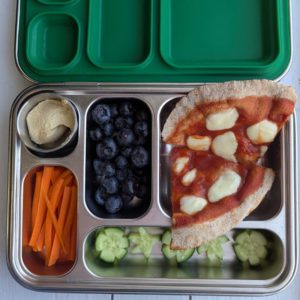If gas prices make you anxious each time you roll into your local station, you’re not alone. Even with the price of gas significantly lower than last summer, do you ever wonder why they went up in the first place, or how you would survive such an increase again? Ever get the feeling that you need a degree in accounting to figure out how to afford the rising price of groceries? With food prices up 50% from 2004, ever wonder who’s to blame? Are you busy trying to figure out what this ethanol business is all about?
With global warming and increasing pollution in developing nations the desire to decrease fossil fuel emissions is of increasing concern. The government has started to look at other forms of energy such as ethanol, or fuel from corn. Though it sounds really good, when looking closer you can’t ignore how growing corn for fuel is impacting both the cost of food domestically and worldwide, as well as the environmental costs. Originally it seemed like a great idea to “grow” our own fuel but at what cost are we to suffer economically, environmentally, and socially?
How does this affect us?
When we, as consumers, have the ability to make informed choices about where our food comes from, we can choose to be socially and environmentally responsible and more importantly, make an impact on overall food prices. When we choose to buy food that has been shipped to our local grocery store from 3000 miles away we drive up the demand for all fuels, including ethanol. And when we continue to plant more corn for ethanol we then make land unavailable to grow food for human consumption; therefore driving up food prices while at the same time harming our local environment. Did you realize that this year’s federal ethanol mandate will cause an estimated 100 million tons of soil erosion and will put 300,000 tons of nitrogen from fertilizer into Midwestern waters?
Choosing more local foods instead of buying foods from the other side of the continent or world, is a great way to consciously chose to protect the environment by eliminating the use of extra fuel to get it from farm to table. When choosing to buy more products (not just food) locally, we not only support the local economy but act as a driving force in decreasing the demand for fuel. By actively seeking local products and foods, you’re helping create a cleaner environment for your community.
So What Can You Do?
- Two words: Buy Local.
- Local foods, especially produce from your farmers’ markets, most often are cheaper, tastier, and more nutritionally sound than from your supermarket. Also by getting one-on-one contact directly from the source you can have greater confidence in the integrity of the food you feed your family.
- Local produce, even though not technically organic, are often grown using organic practices. Ask your local farmer about the pesticides and fertilizers they use. It’s usually less than you think
- Join a CSA: Community Supported Agriculture. A CSA is a way that a community can build a relationship and pledge to support a local farm or group of farms. When you join a CSA you pay a certain fee ahead of a season, usually spring to summer, and in return you receive a supply of freshly harvested produce weekly during that season. You can find your local CSA at www.localharvest.org.
- Find your local farm and make a family outing out of it. Most farms have many “u-pick” weekends that are family friendly. This is a great way to enjoy the outdoors, meet members of your community, and promote healthy habits to your children.
- Find your local farmers’ market or CSA by visiting: https://www.ams.usda.gov/local-food-directories/farmersmarkets or www.localharvest.org
- Get informed by visiting sites such as: www.worldhungeryear.org
The next time you go to the grocery store, and feel overwhelmed by the rising cost of food, remember that there are other options. By taking some of the steps mentioned, you can be assured that your choices will positively affect the health of you and your family, your local environment, as well as other environments across the country and world.
For more knowledge on healthful and local foods visit Organic and Local Foods.












